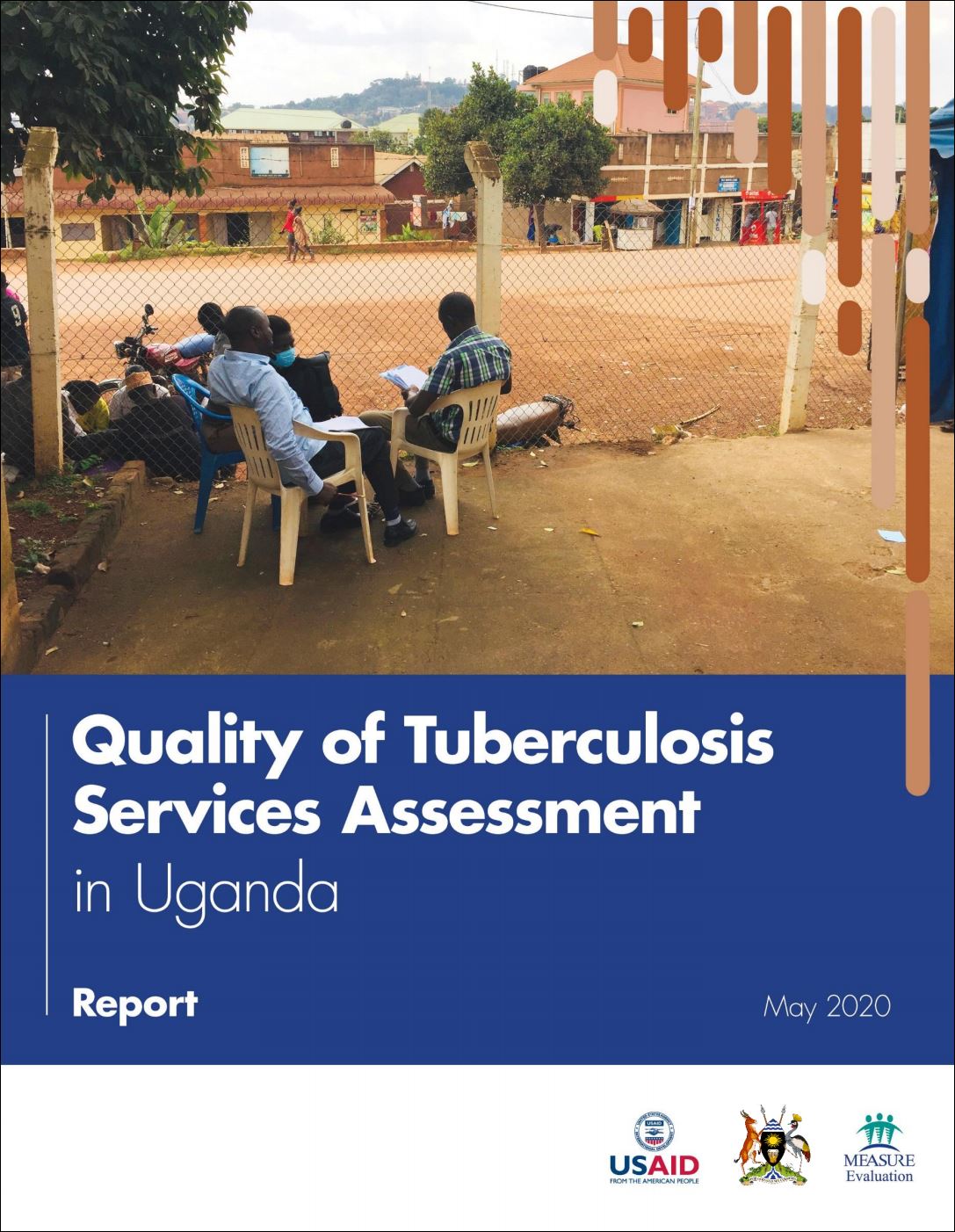Quality of Tuberculosis Services Assessment in Uganda: Report

Abstract: According to the 2018 Global Tuberculosis Report released by the World Health Organization (WHO), tuberculosis (TB) is the tenth leading cause of death and is the leading cause of death from a single infectious agent. Heads of state committed to ambitious targets aimed at eliminating TB during the first-ever United Nations High-Level Meeting on Tuberculosis conducted in September 2018 at the United Nations General Assembly.
Uganda is one of the 30 countries with the highest burden of TB/HIV, with an estimated TB incidence of 200 cases per 100,000. The proportion of multidrug-resistant tuberculosis and rifampin-resistant TB among new and previously treated TB cases was estimated at 1 percent and 12 percent, respectively, in 2018. For the estimated 86,000 people who fell ill with TB in 2019, TB treatment coverage was 65 percent, and the treatment success rate was 72 percentboth far below the 85 percent national target for 2019. In response, the Government of Uganda gave the Ministry of Health, through the National Tuberculosis and Leprosy Programme (NTLP), a mandate to bring the disease under control by means of providing high-quality prevention, diagnosis, and treatment services to affected Ugandans. Specifically, TB incidence is to be reduced by 5 percent by 2019/2020, and the treatment success rate among notified incident cases is targeted to increase from 75 percent in 2015/16 to 85 percent by 2019/20.
Studies show that good quality of care in TB services helps patients and their families address their health needs safely and effectively. Therefore, to enhance TB service use, there is a need to assess and improve the quality of TB services. A Quality of TB Services Assessment (QTSA) was conducted by MEASURE Evaluation in Uganda to assess the quality of TB services in randomly selected health facilities. Its purpose was to identify where services were of high quality and where there were gaps and to ensure that TB patients were receiving the care that they deserve. The QTSA assessed three domains of quality of care: the structure of the health facility, the service delivery process, and the outcomes of service delivery. The results were used to develop programs or interventions to improve TB service delivery.
Access additional QTSA resources at https://www.tbdiah.org/assessments/quality-of-tuberculosis-services-assessments/.
A comparison of survey results to evaluate the availability, readiness, and quality of the Uganda tuberculosis diagnosis network was published in 2021.
Uganda is one of the 30 countries with the highest burden of TB/HIV, with an estimated TB incidence of 200 cases per 100,000. The proportion of multidrug-resistant tuberculosis and rifampin-resistant TB among new and previously treated TB cases was estimated at 1 percent and 12 percent, respectively, in 2018. For the estimated 86,000 people who fell ill with TB in 2019, TB treatment coverage was 65 percent, and the treatment success rate was 72 percentboth far below the 85 percent national target for 2019. In response, the Government of Uganda gave the Ministry of Health, through the National Tuberculosis and Leprosy Programme (NTLP), a mandate to bring the disease under control by means of providing high-quality prevention, diagnosis, and treatment services to affected Ugandans. Specifically, TB incidence is to be reduced by 5 percent by 2019/2020, and the treatment success rate among notified incident cases is targeted to increase from 75 percent in 2015/16 to 85 percent by 2019/20.
Studies show that good quality of care in TB services helps patients and their families address their health needs safely and effectively. Therefore, to enhance TB service use, there is a need to assess and improve the quality of TB services. A Quality of TB Services Assessment (QTSA) was conducted by MEASURE Evaluation in Uganda to assess the quality of TB services in randomly selected health facilities. Its purpose was to identify where services were of high quality and where there were gaps and to ensure that TB patients were receiving the care that they deserve. The QTSA assessed three domains of quality of care: the structure of the health facility, the service delivery process, and the outcomes of service delivery. The results were used to develop programs or interventions to improve TB service delivery.
Access additional QTSA resources at https://www.tbdiah.org/assessments/quality-of-tuberculosis-services-assessments/.
A comparison of survey results to evaluate the availability, readiness, and quality of the Uganda tuberculosis diagnosis network was published in 2021.
Shortname: tr-20-398
Author(s): Kola Oyediran, Bruce Kirenga, Stavia Turyahabwe, Nikki Davis, Jeanne Chauffour, Winters Muttamba, Abel Muzoora, Herbert Muyinda
Year: 2020
Language: English
Resource Type: Guidance and Tools
Source: MEASURE Evaluation
